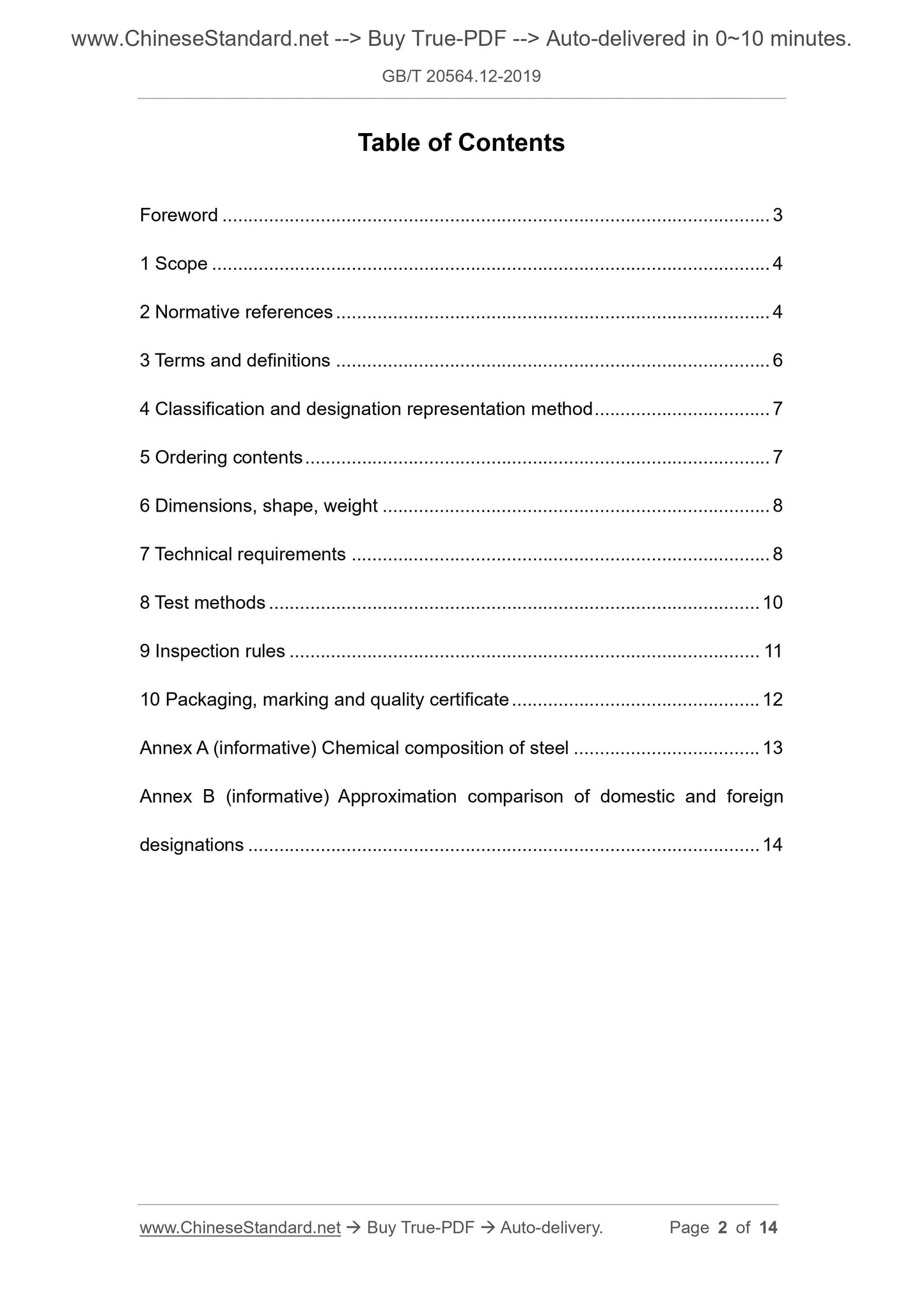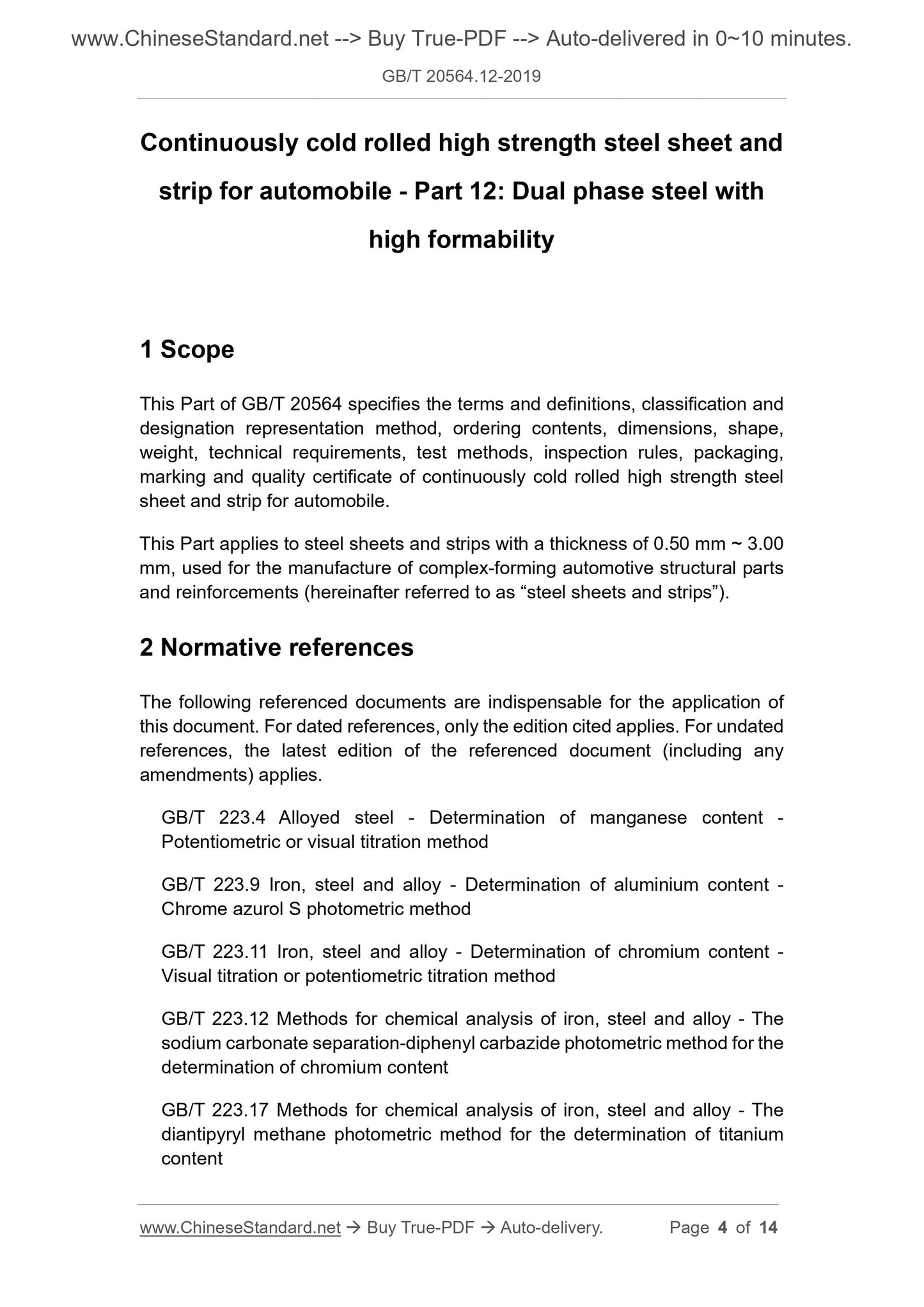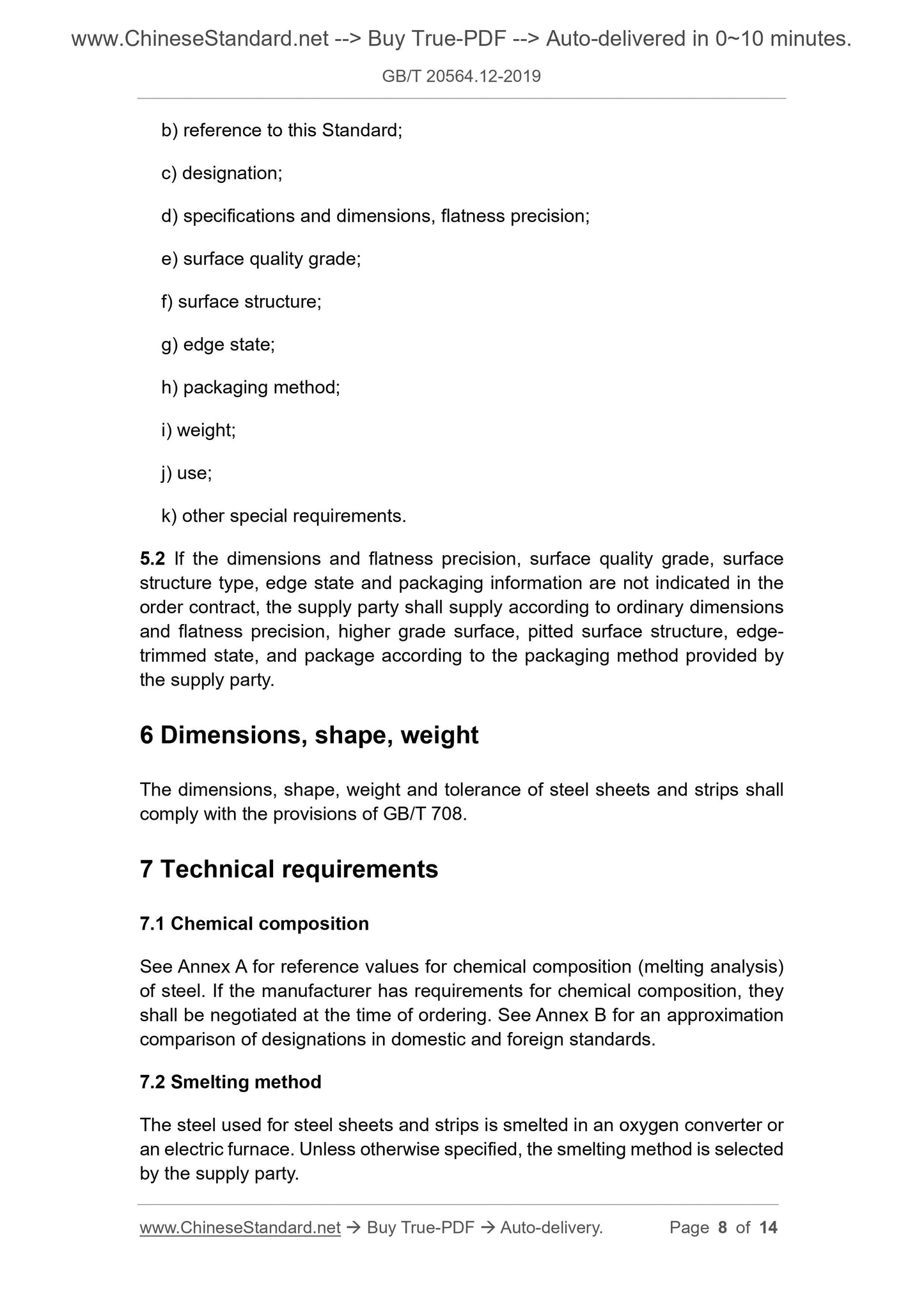1
/
of
5
www.ChineseStandard.us -- Field Test Asia Pte. Ltd.
GB/T 20564.12-2019 English PDF (GB/T20564.12-2019)
GB/T 20564.12-2019 English PDF (GB/T20564.12-2019)
Regular price
$135.00
Regular price
Sale price
$135.00
Unit price
/
per
Shipping calculated at checkout.
Couldn't load pickup availability
GB/T 20564.12-2019: Continuously cold rolled high strength steel sheet and strip for automobile - Part 12: Dual phase steel with high formability
Delivery: 9 seconds. Download (and Email) true-PDF + Invoice.Get Quotation: Click GB/T 20564.12-2019 (Self-service in 1-minute)
Newer / historical versions: GB/T 20564.12-2019
Preview True-PDF
Scope
This Part of GB/T 20564 specifies the terms and definitions, classification anddesignation representation method, ordering contents, dimensions, shape,
weight, technical requirements, test methods, inspection rules, packaging,
marking and quality certificate of continuously cold rolled high strength steel
sheet and strip for automobile.
This Part applies to steel sheets and strips with a thickness of 0.50 mm ~ 3.00
mm, used for the manufacture of complex-forming automotive structural parts
and reinforcements (hereinafter referred to as “steel sheets and strips”).
Basic Data
| Standard ID | GB/T 20564.12-2019 (GB/T20564.12-2019) |
| Description (Translated English) | Continuously cold rolled high strength steel sheet and strip for automobile - Part 12: Dual phase steel with high formability |
| Sector / Industry | National Standard (Recommended) |
| Classification of Chinese Standard | H46 |
| Classification of International Standard | 77.140.50 |
| Word Count Estimation | 10,142 |
| Date of Issue | 2019-03-25 |
| Date of Implementation | 2020-02-01 |
| Quoted Standard | GB/T 223.4; GB/T 223.9; GB/T 223.11; GB/T 223.12; GB/T 223.17; GB/T 223.26; GB/T 223.40; GB/T 223.58; GB/T 223.59; GB/T 223.60; GB/T 223.67; GB/T 223.69; GB/T 223.72; GB/T 223.78; GB/T 223.86; GB/T 228.1-2010; GB/T 247; GB/T 708; GB/T 2523; GB/T 2975 |
| Issuing agency(ies) | State Administration for Market Regulation, China National Standardization Administration |
| Summary | This standard specifies the terms and definitions of cold-rolled enhanced formability dual-phase high-strength steel sheets and strips, classification and designation methods, order content, dimensions, shapes, weights, technical requirements, test methods, inspection rules, packaging, marking and Quality certificate. This standard is applicable to steel plates and steel strips (hereinafter referred to as "steel plates and steel strips") with a thickness of 0.50 mm to 3.00 mm for the manufacture of complex automotive structural parts and reinforcements. |
Share









